Are you looking for a sweet spread? Or a fruity topping for your porridge or cereal? Then look no further than this sweet treat: Medlar fruit butter. What on earth is medlar fruit? I can imagine some of you are asking. Not surprising because it is a fruit rarely available in shops. It is a bit of a forgotten fruit, and I want to highlight it in this post.
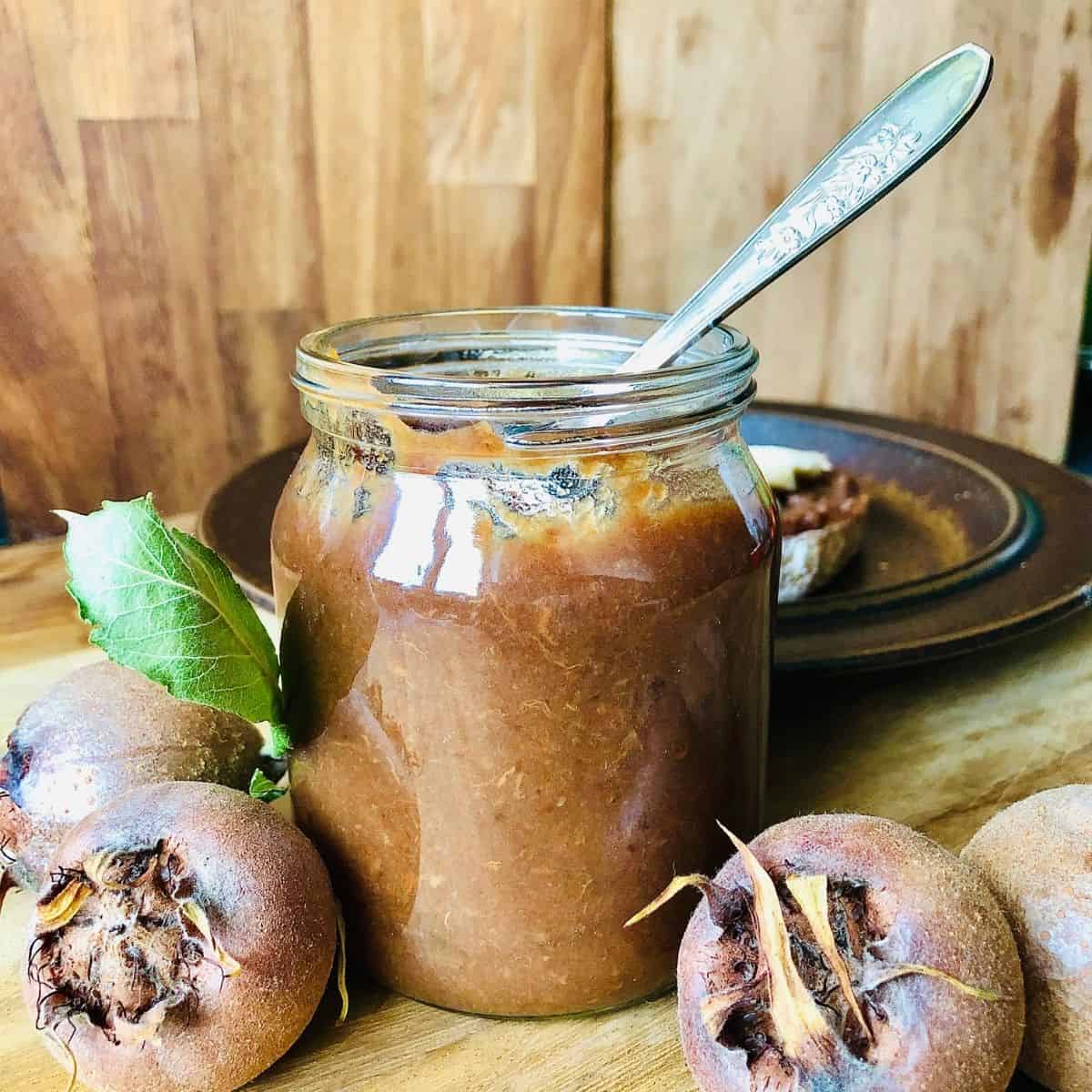
The medlar appeared in Europe way back in history, before Roman times. It was popular up to Medieval times, but by the 1700s had lost its popularity.
The medlar is a small crab-apple-sized fruit with a dull golden colour. They are not particularly attractive fruit. Amusingly, they are referred to in some localities as "monkeys bottom" due to their appearance. Indeed, references to "open arse" occur in literature like Shakespeare and Chaucer. In France, it is referred to as "cul de chien" or "dog's arse." I will have none of this, though! I am here to champion this humble fruit!
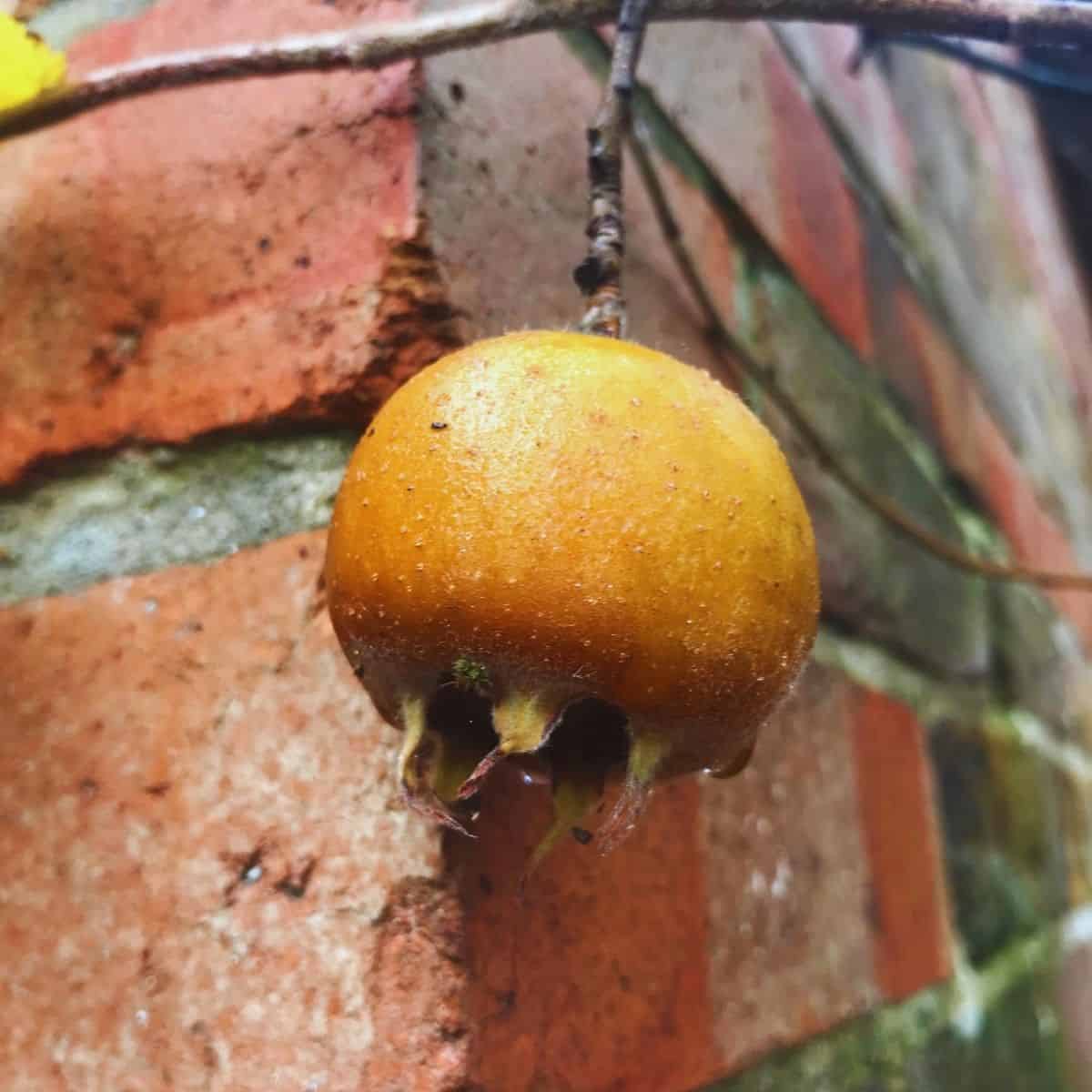
If you liked this fruit butter, why not try my crab apple butter?
Also, please check out my dried quince slices. Quince is another delicious but underrated fruit.
Ingredients
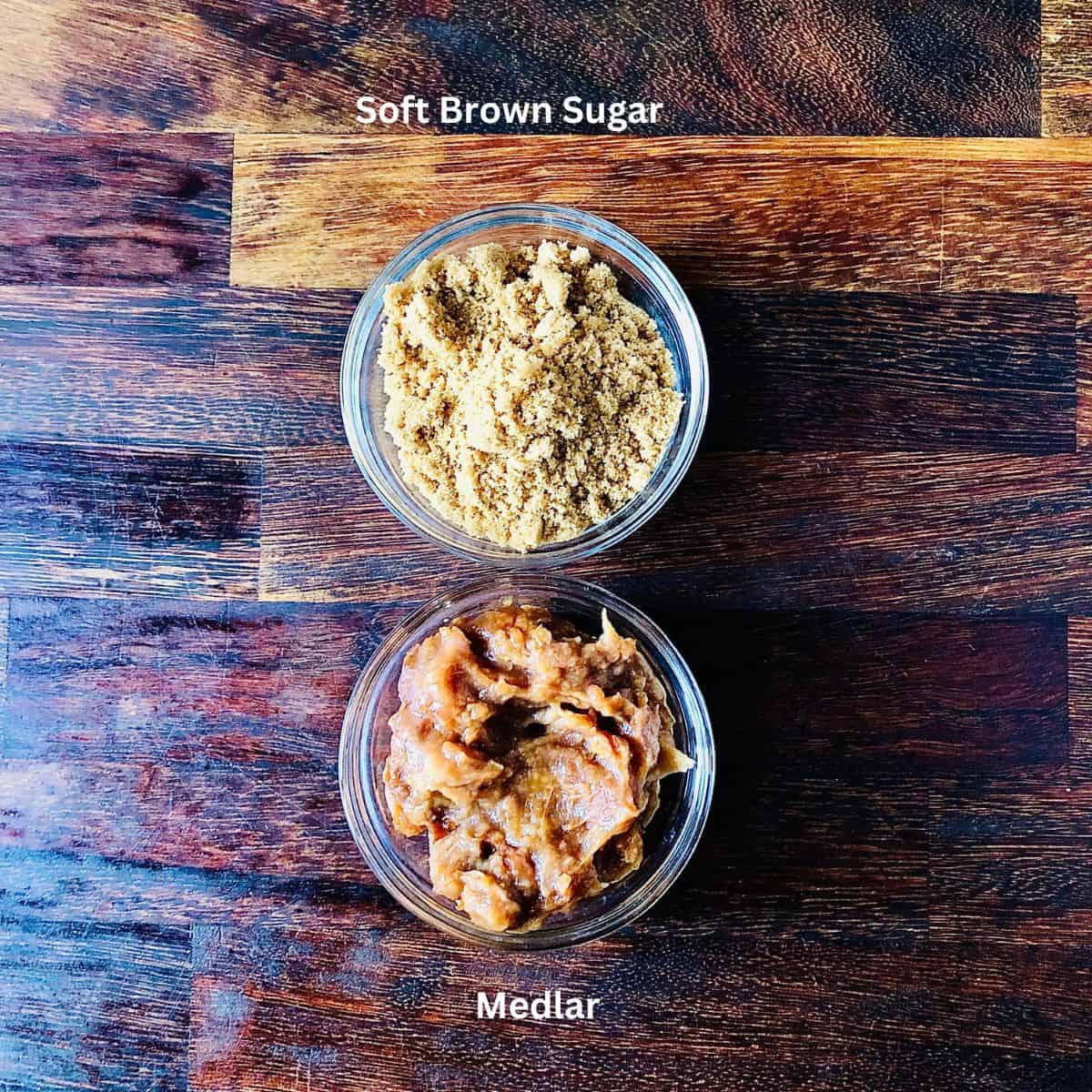
- Medlar fruit
- Soft brown sugar
- Water
Instructions

Remove the skin from the medlars.
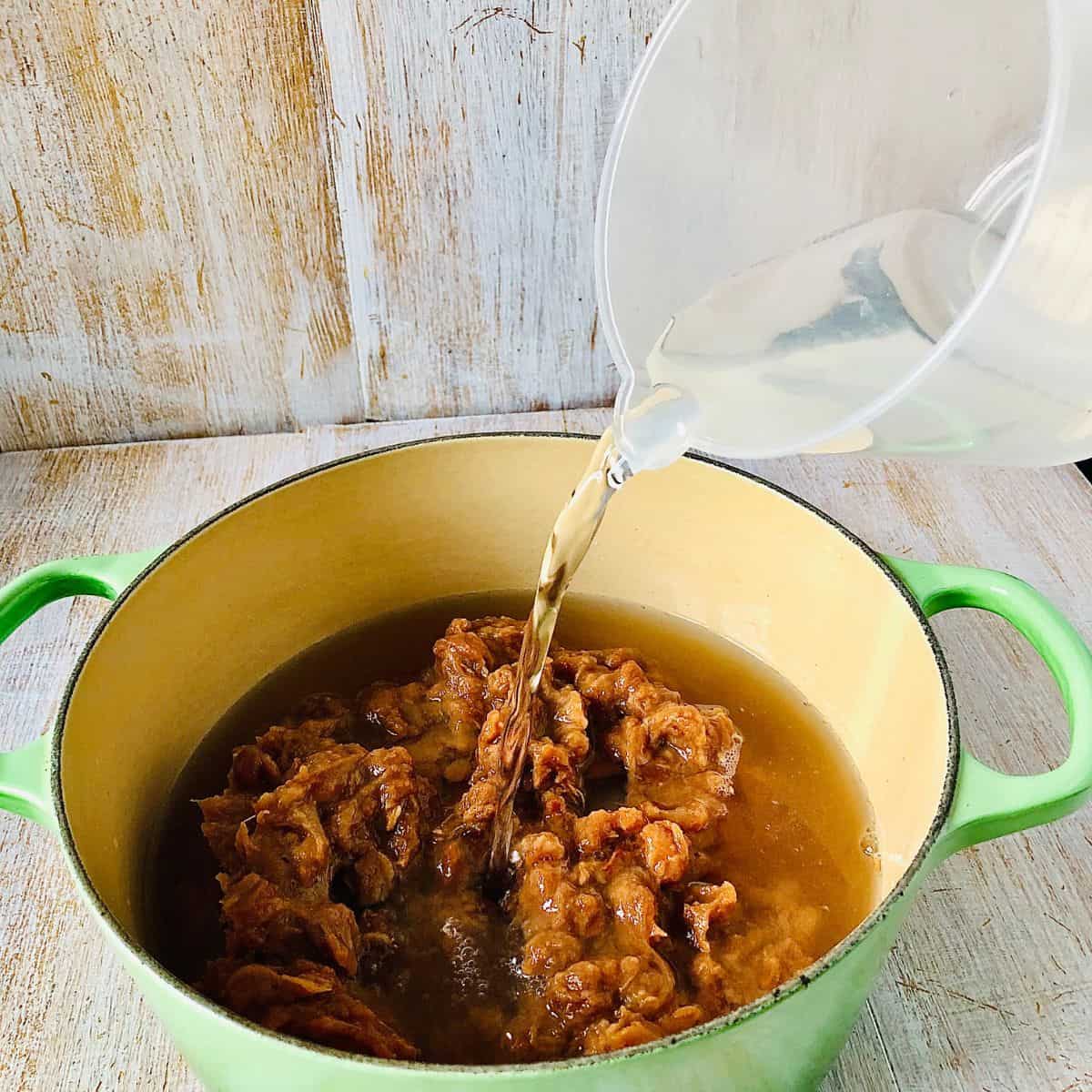
Transfer the fruit to a saucepan and add the water. Bring to a rapid boil and then simmer for 15 minutes.

Pass the medlar fruit through a colander (not a sieve) to separate the seeds.
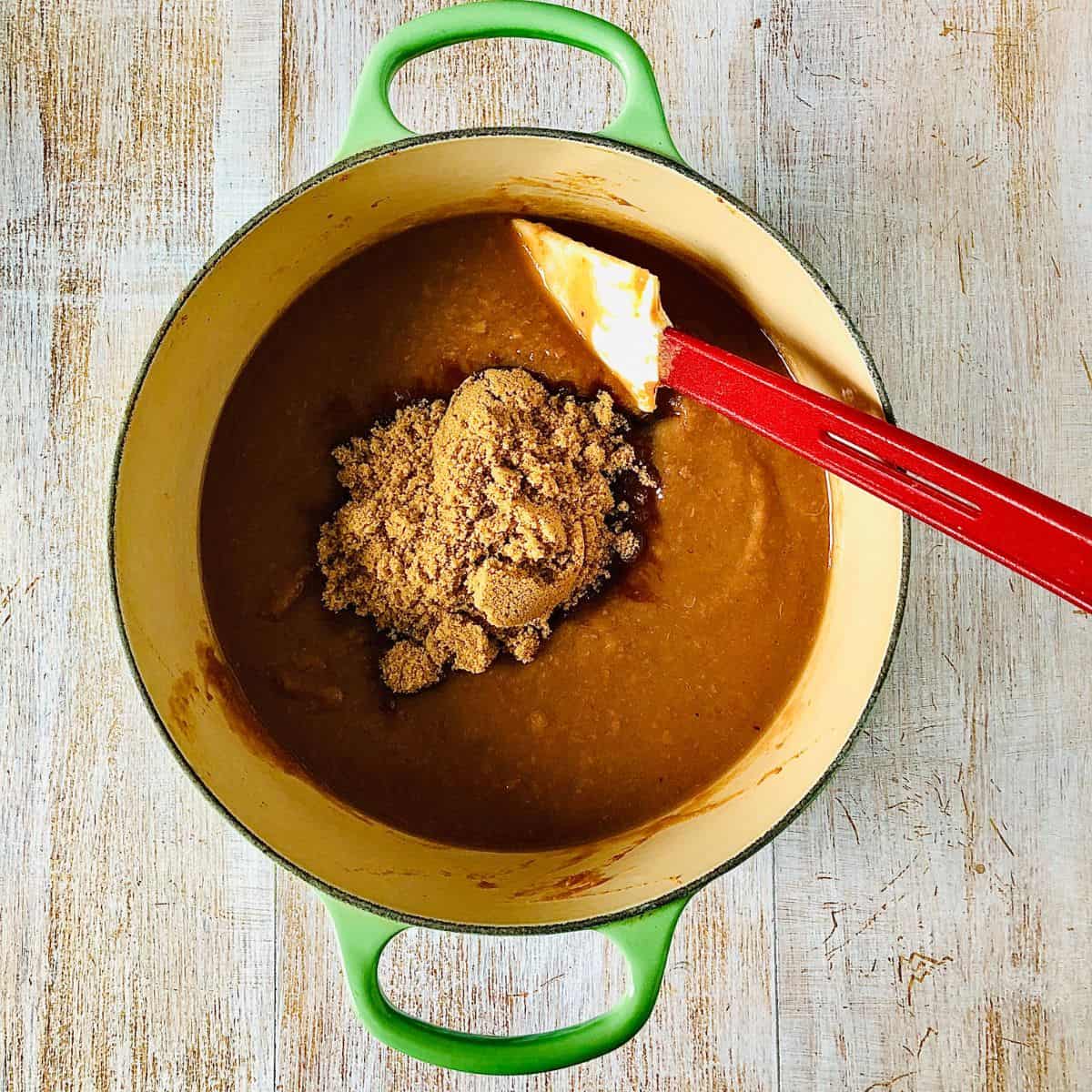
After separating the seeds, transfer the fruit puree back to the post and add the sugar over medium heat.
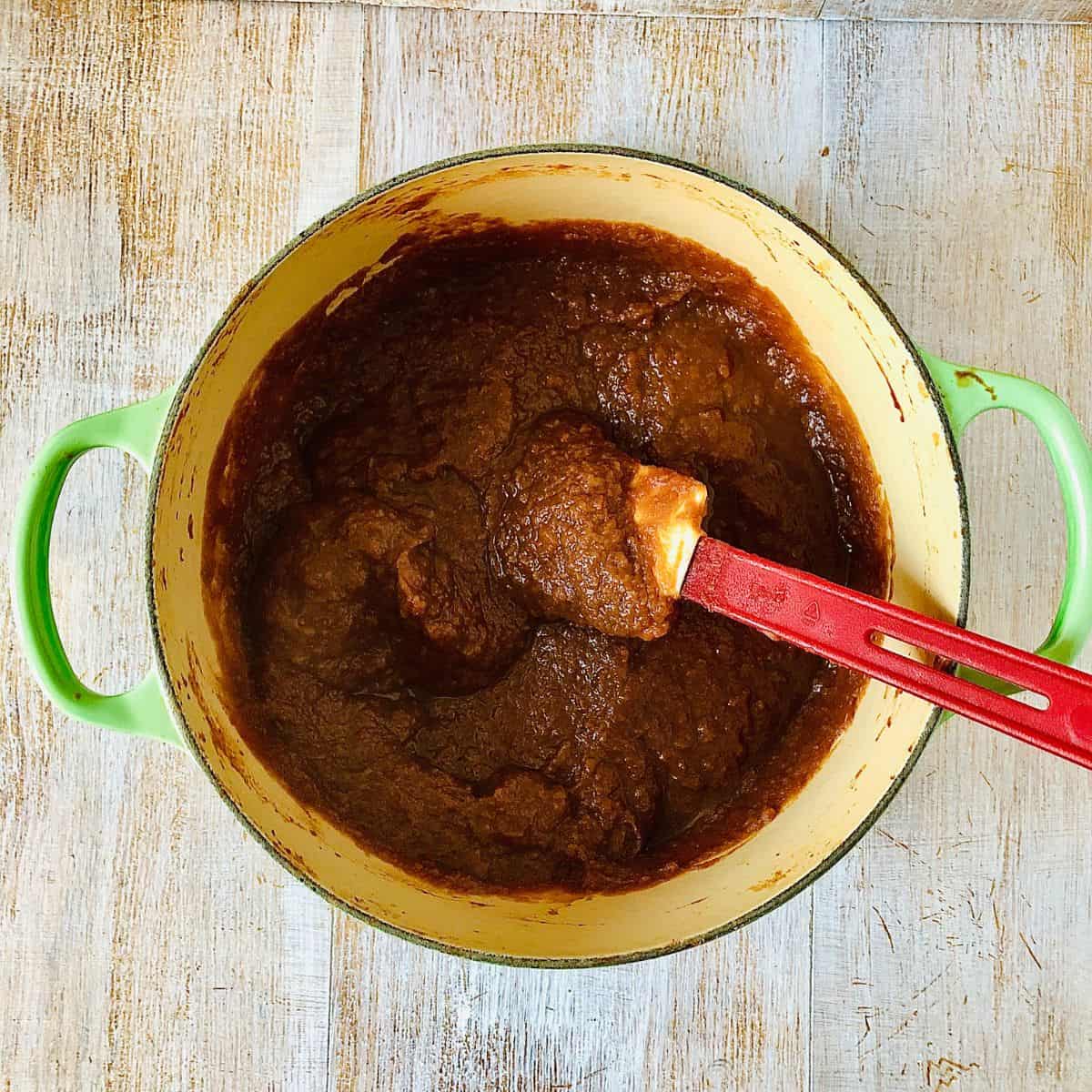
Stir continually. As the mixture thickens, it will change colour.
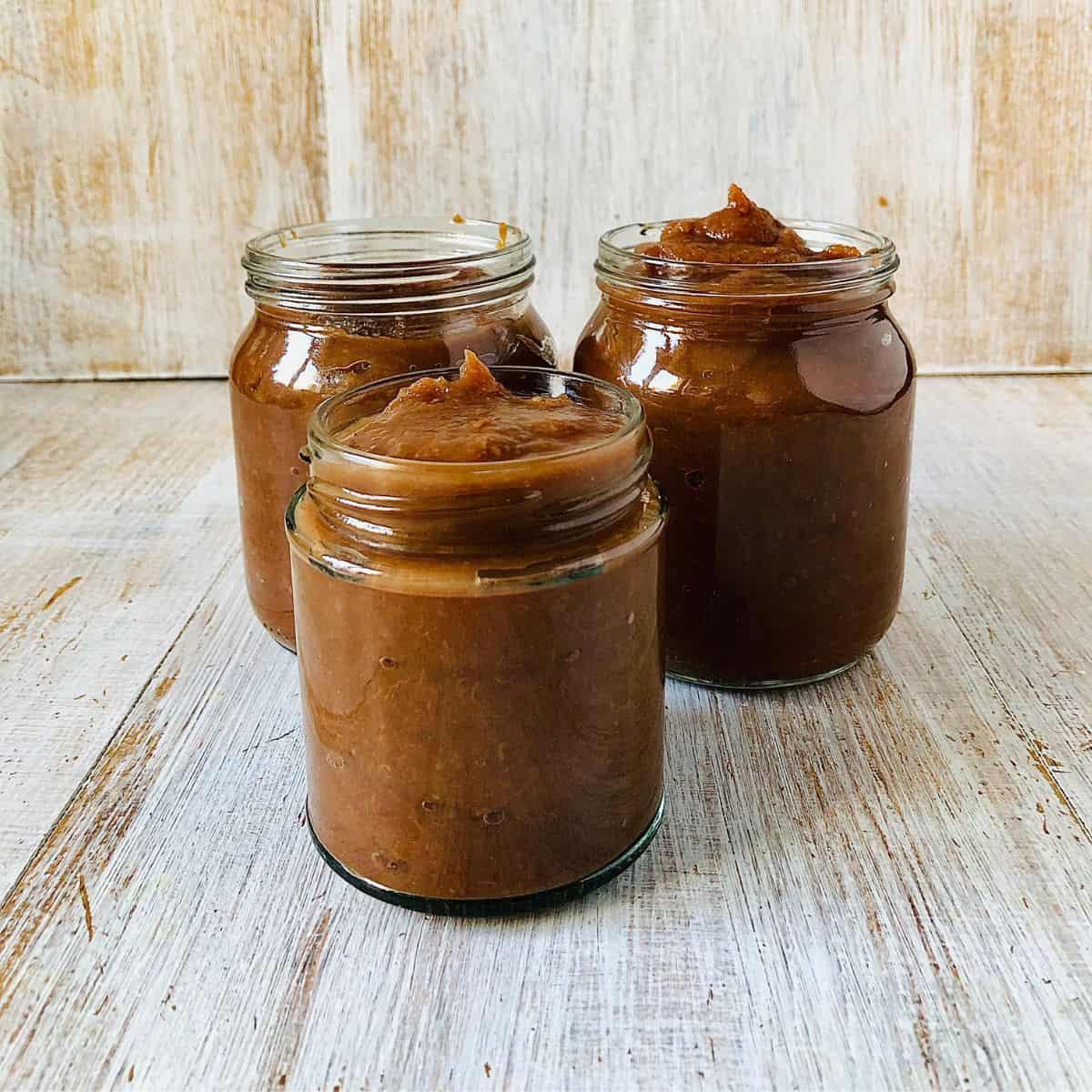
Once ready, transfer to sterilised bottles and seal the jars shut once the contents have cooled.
Store in a dry, dark place or refrigerate
Substitutions
I use soft brown sugar in this recipe because I like the colour it produces in the medlar butter. You can, however, use demerara sugar or any other kind of brown sugar.
Variations
To add some extra flavours, you could add clove powder, star anise powder, or cinnamon powder.
Storage
You can keep medlar butter at room temperature in a cool dark place or refrigerated for up to three months. Make sure that you sterilise the jars and use a clean spoon.
Top Tips
The reason for using a colander, not a sieve, is that the aim is only to remove the stones and leave the pulp. During cooking, the pulp breaks down completely into a smooth puree-like texture.
How will you know when the fruit butter is ready? It will change from a tan colour into a chocolate brown colour. It will be pretty thick, like a soft jam and have a nice shine. Have a look at the video to see the different stages.
FAQ's
Medlar is harvested relatively late in the year, around late October into November. The aim is to gather them when they are very ripe. A few touches of frost help the ripening process. Once they are off the tree, they usually need to be bletted - see the nest question. Another indication that harvesting time is near is that all the leaves will have fallen off the tree.
A popular way to use medlars is in jellies or jams. This recipe is a medlar butter. It is between a fruit puree and a jam. Perfect for porridge, cereal, or to spread on toast, perhaps with a layer of sliced banana.
As well as its appearance, the way this fruit ripens to the point of being edible can put people off. Usually, if a piece of fruit goes soft and wrinkly, it is ready for the bin. Medlar fruit, on the other hand, is at its prime eating stage when they are soft and wrinkly. To get to this point, they need bletting. This is the process of turning the fruit from a hard, tart, inedible fruit to a soft, squishy, sweet state. They are edible when they look rotted. This is counterintuitive for most of us. However, don't be put off by this appearance.
The soft sweet fruit has been described as tasting like stewed apples or over-ripe dates.
Medlar fruit can be eaten raw by squishing out the fruit after the betting has finished.
📖 Recipe
Food Safety
In a professional kitchen, food hygiene and safety are top priorities, and from the beginning of my training, I practised good habits and routines. Of course, practising good food hygiene and safety at home is also essential. Here are some fundamental practices to adopt in the kitchen.
- Wash your hands regularly while preparing, handling and cooking food.
- Wipe down countertops and high-contact points regularly.
- If you cook meat and fish, do not use the same utensils on cooked food that previously touched raw meat. Use separate chopping boards for meat and fish. Wash your chopping boards immediately after use.
- Thoroughly cook food to a minimum temperature of 165 °F (74 °C).
- Don't leave food at room temperature for extended periods (more than 2 hours).
- Store food correctly.
For more details regarding food hygiene and safety in the home, visit the UK Government's Food Standards Agency webpage.

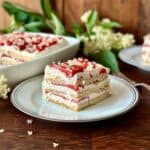
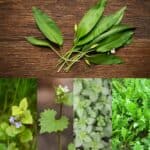
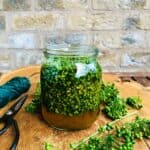
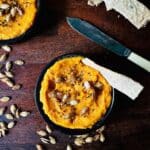
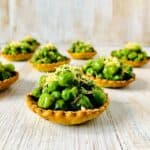
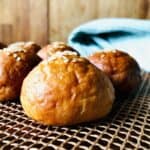
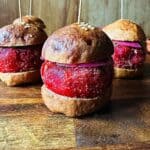
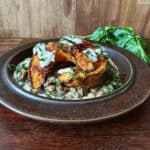
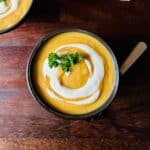
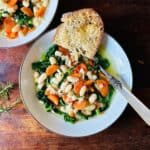

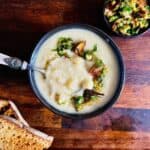
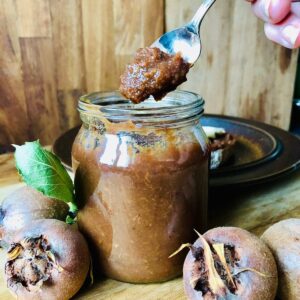
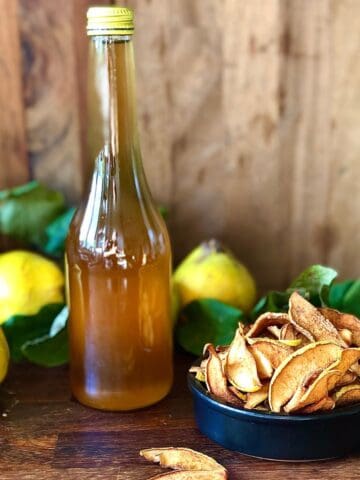
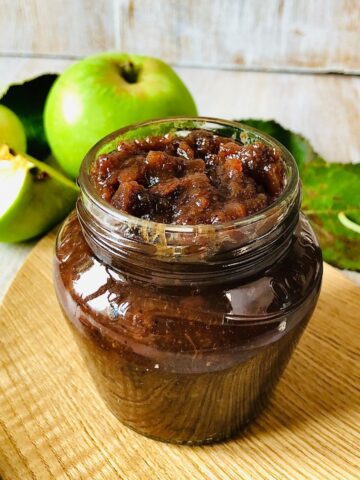
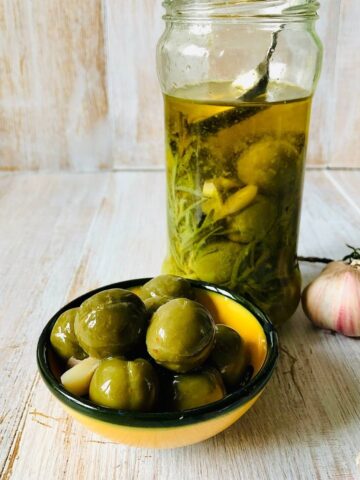
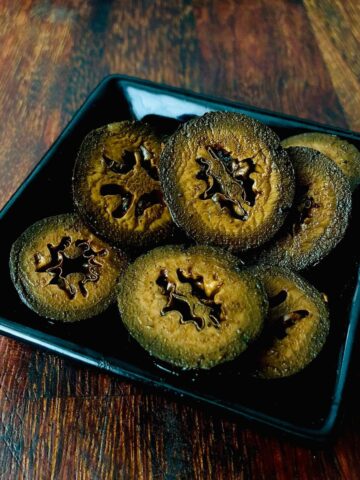
Gary
Love having this on porridge